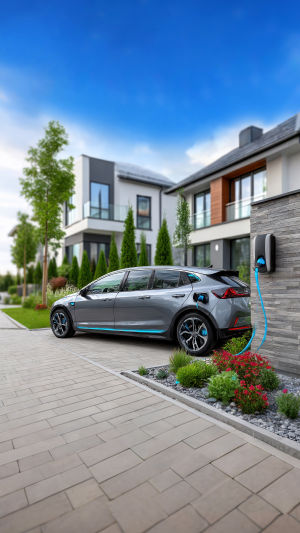Have you ever wondered what the car industry is doing to fight climate change?
With global warming posing an urgent threat, the automotive sector—long known for its reliance on fossil fuels—is undergoing significant transformation.
This article explores the concrete steps car manufacturers are taking to reduce environmental impact, embrace new technologies, and meet rising regulatory and consumer demands for sustainability.
<h3>The Climate Challenge for the Car Industry</h3>
The automotive industry is a major source of greenhouse gas emissions, responsible for nearly 15% of global CO2 emissions from fuel combustion. This creates a pressing need for change, as climate experts warn that reducing carbon footprints in transportation is essential to limiting global temperature rise. The challenge is immense, involving shifts not only in vehicle technology but also in manufacturing processes and supply chains.
<h3>Electrification: Leading the Green Revolution</h3>
One of the most visible responses is the rapid development and adoption of electric vehicles (EVs). Many major manufacturers have committed to phasing out internal combustion engines (ICE) in favor of battery-electric and plug-in hybrid models. EVs produce zero tailpipe emissions, which significantly reduce urban air pollution and overall carbon output when charged with renewable energy.
<h3>Innovations in Battery Technology</h3>
Battery advancements are critical to making electric cars more affordable and practical. Companies are investing heavily in research to improve energy density, reduce charging times, and extend lifespan. Solid-state batteries are still under development, but experts suggest they could revolutionize the market within the next decade.
<h3>Alternative Fuels and Hydrogen Vehicles</h3>
Beyond electrification, some manufacturers are exploring alternative fuels like hydrogen. Hydrogen fuel cell vehicles emit only water vapor, offering a clean driving experience with quick refueling times. Though infrastructure remains limited, hydrogen represents a complementary path toward decarbonization, especially for heavy-duty and long-range transport.
<h3>Carbon-Neutral Manufacturing</h3>
Reducing emissions extends beyond cars themselves. The industry is also focusing on making manufacturing processes carbon-neutral. This includes using renewable energy in factories, improving energy efficiency, and sourcing sustainable materials. Some companies have announced plans to achieve zero emissions across their entire production chain by 2035 or earlier.
<h3>Recycling and Circular Economy Efforts</h3>
Sustainability initiatives also target vehicle end-of-life. Increasing recycling of batteries and materials helps lower demand for raw resources and reduces waste. A circular economy approach encourages designing cars for easier disassembly and reuse, minimizing environmental impact throughout the vehicle lifecycle.
<h3>Government Regulations Driving Change</h3>
Regulatory pressure plays a crucial role in accelerating industry shifts. Many countries have set ambitious targets to phase out gasoline and diesel vehicles by 2030 or 2040. Emission standards are becoming more stringent, compelling manufacturers to innovate or risk losing market access. Subsidies and incentives for EV purchases also stimulate consumer adoption.
<h3>Consumer Demand and Market Trends</h3>
Consumer preferences are shifting rapidly as well. Increasing environmental awareness and the availability of green alternatives are pushing demand for sustainable vehicles. According to market research, EV sales grew by over 40% worldwide in the past year, signaling strong momentum. Manufacturers are responding by expanding EV offerings across price ranges and segments.
<h3>Challenges Still Ahead</h3>
Despite progress, challenges remain. Charging infrastructure development lags behind EV growth in many regions, creating range anxiety. The environmental impact of battery production, particularly lithium and cobalt mining, raises concerns. Additionally, balancing cost, performance, and sustainability continues to test innovation limits.
<h3>The Road Ahead: What Can You Do?</h3>
As a consumer, supporting the shift means considering electric or hybrid vehicles when buying or renting cars, and advocating for sustainable transportation policies. Staying informed about innovations and infrastructure developments helps you make eco-friendly travel choices. Every step counts in driving the industry—and the planet—toward a more sustainable future.
What changes have you noticed in car technology or policies in your area? Are you considering switching to an electric or hybrid vehicle? Share your thoughts—your perspective helps us all understand how the car industry can better address climate change.





